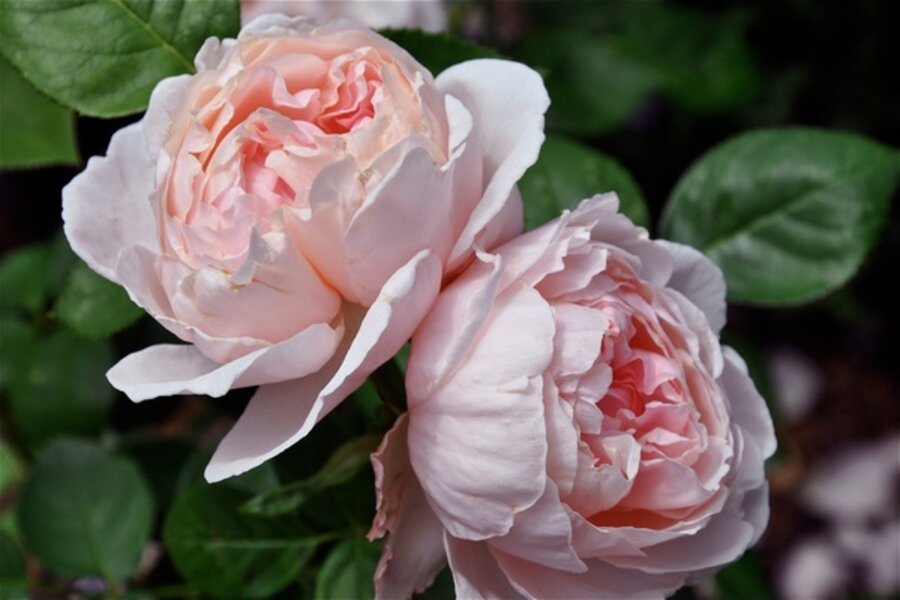When and how to prune roses
It’s time to get the garden ready for spring, but don’t prune too soon.
Although the calendar says February, it isn’t too early to start thinking about tidying up the garden for the growing season ahead. As I write this, it's sunny and 68 degrees F. (20 C) here on the Eastern Shore of Maryland, so I ventured out to get an idea of the damage Old Man Winter has done.
I wasn’t surprised to find dead leaves everywhere. It doesn’t matter how often we rake and turn them into mulch, tons of additional leaves find their way to our property.
I was surprised, though, to see that all my rose cuttings had died. That has never happened before, and it’s perplexing since this winter has been milder for us than the last.
Another unpleasant discovery was that people installing city sewer lines in the neighborhood had trampled an area of the garden. At the moment, it doesn’t appear that the little patch of roses and other perennials will survive.
So after assessing the state of the garden, I rolled up my sleeves, got out my Bionic rose gloves, secateurs, mini rake, trusty Oxo Gel-e Gardening Weeder and iPad, and got to work. (I find an iPad or iPod to be essential gardening equipment since all chores go more quickly when listening to my favorite tunes.)
I bagged the leaves, extracted weeds, and cut back most of my perennials including catmints, lavenders, centranthus and spireas, but I didn’t prune the roses.
Rule of thumb for when to prune
When we get the occasional nice day in winter, people ask if it’s OK to go ahead and prune the roses. I advise waiting, because if another cold spell comes along, canes can be damaged and you’ll just have to do it all over again.
In most areas of the country, a good rule of thumb is to prune when the forsythia blooms. Start by pulling off any diseased leaves that have wintered over on your rose bushes. Dispose of them right away -- don’t throw them on the ground or you’ll be inviting even more disease problems.
Then get out your newly sharpened pruning shears and remove dead wood right down to the bud union. To help improve air circulation, remove any canes that crisscross, canes that grow into the center of the bush, and any weak, spindly growth.
Diseased or winter-damaged wood should be pruned to the point where you find light green or white pith. Make your cuts at a 45-degree angle about 1/4 inch above a leaf bud that faces toward the outside of the plant.
Many rose varieties have specific pruning requirements
How severely you prune depends on the type of rose. Unless you plan to exhibit, most experts recommend moderate pruning of hybrid teas, floribundas, and grandifloras -- leaving the bushes about 18 to 24 inches high.
Hybrid perpetual roses, shrub roses, and old garden roses just require thinning and shaping, so limit yourself to removing only old canes, dead wood, and spindly growth.
David Austin English roses don’t appreciate drastic haircuts.
Pruning climbing roses can be a bit trickier. Climbers that have only one flowering period should be pruned after they bloom. Take out old, weak, or entangled branches. Repeat-blooming climbers need to be pruned while dormant in the spring. Again, remove any old or unproductive canes, then cut back side shoots to pencil thickness.
Miniatures and minifloras are your easiest task. A recent study showed meticulous pruning didn’t really affect the plant’s success at all. So whether you use secateurs or a chain saw, cut back to about half of last summer’s height.
After pruning, paint any cuts wider than a straw with a sealing compound (Elmer’s glue will do fine) to discourage insects and disease. Your roses should now be ready for the 2011 blooming season.
PSSSST: Roses are greedy feeders, so after pruning, give them a dose of rose fertilizer – I use plain old 10-10-10. You can also sprinkle ¼ cup of Epsom salts around each bush to encourage basal breaks.
-----
Lynn Hunt, the Rose Whisperer, blogs regularly at Diggin' It. She's an accredited horticultural judge and a Consulting Rosarian Emeritus for the American Rose Society. She has won dozens of awards for her writing in newspapers, magazines, and television. She grows roses and other plants in her garden on the Eastern Shore of Maryland. To read more by Lynn, click here.You can also follow her on Twitter.





